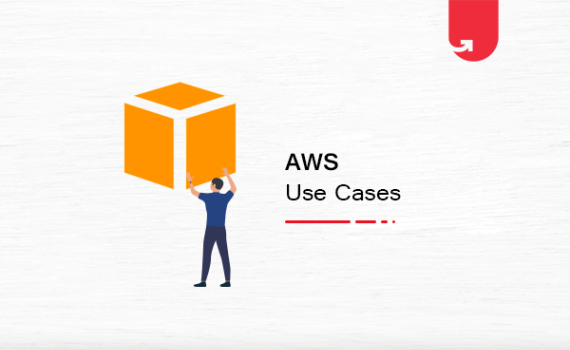IoT: History, Present & Future
IoT is swiftly making its way in every aspect of human life with industrial, medical or personal requirements. IoT devices are evolving to serve diverse needs with time. Looking at the system’s history, present, and the future state of IoT, it is safe to assume that IoT is here to stay.
Share
A rapidly growing phenomenon taking over every industry, IoT is the talk of the town, and rightly so. IoT is reinventing gadgets with ‘smartness’ using an embedded combination of multiple software and technologies. From wellness to automation, IoT has its presence in all domains. The system incorporates an interconnected web of devices, retrieving and sharing information to generate a well-rounded user experience. It harnesses everyday devices to add a technological flair to make it as good as any sophisticated device, created exclusively to tackle multiple issues. It is impossible to live without being surrounded by IoT enabled devices.
The IoT system made its debut in our daily lives only a few years back as technological advancements started offering better vehicles to make it through homes in a cost-efficient manner. Though the creation of IoT goes long back to the year 1999, so what took it so long? A glance at IoT and its history might help unlock all these questions!
Let’s start by understanding what exactly is IoT.
History of IoT
The initialization of the internet gave rise to multiple technologies, including IoT, to use valuable data to offer better services. IoT’s history dates back to the 1960s, but the recorded creation of the world’s first IoT connected device was done in the 1980s. A group of local programmers in Carnegie Mellon University operated a Coca-Cola vending machine connected through the internet. The machine used integrated micro-switches and an internet connection to keep track of the coolness and availability of cans in the vending machine. The device further motivated programmers and companies to research and create breakthroughs in the same domain.
In the early 1990s, a similar invention was created by John Romkey to connect a toaster with the internet through TCP/IP protocol. A year later, another endeavor was made at the University of Cambridge, but with the first web camera prototype, proving how IoT had tonnes of untapped potential. IoT experienced its major limelight in the year 1999 when expert technologist Kevin Ashton used the term “Internet of Things” in a presentation to explain the complex system of increasing efficiency through connecting multiple devices. While the presentation pertained to supply chain management, the usage of the word Internet helped the system gain momentum amid the media.
While the 80s and 90s initiated the journey of IoT, the 21st century powered it to rise as, by the first few years, the market started seeing a rise in IoT driven devices.
The Current State of IoT
Assimilation of diverse IoT backed devices as a household name speaks volumes of its present state among consumers. Current statistics say there are more than 10 billion active IoT devices globally, and over 83% of organizations have improved their technological efficiency by introducing IoT technology in their devices. The steady growth of IoT has made it “the next industrial revolution” as its effect on lives is changing how people live today.
Although the current scenario offers a green light to growth in IoT based endeavors, the cyber security challenges are one concerning aspect faced by the system. Nevertheless, the near future is driven to achieve growth in numerous fields, constantly harnessing IoT to empower their services and incorporate them into their products.
Future of IoT
Looking at the current state and the unstoppable potential of IoT, the future further awaits limitless possibilities for IoT in different sectors. The current market revenue for the IoT sphere is $212 billion across the globe, with 10 billion active connected devices right now, and reports claim an even better performance for the domain in upcoming years. Furthermore, the number of IoT connected devices is projected to reach 38.6 billion by 2025, proving the rapid growth of the IoT ecosystem across the globe.
As the market is innovating technological advancements to create unique products, the objective is to empower them towards smarter use, which is only possible through IoT generated data. Perceiving the rapid pace IoT ecosystem is following, an interconnected world is inevitable. The future of IoT is full of exciting opportunities.
Future Applications of IoT
As the IoT ecosystem evolves, it will soon reign the market, creating a comprehensive system to connect devices and people in a data-driven web. IoT aims to spread its ecosystem across multiple fields to make the vision possible. Here are a few predicted future applications of IoT.
- Smart lighting driven through IoT is already in the market. Yet, an updated product form can be introduced, which can compile a mesh of several lights to regulate each of them simultaneously. These lights are aimed to be entirely wireless and accessible on smart devices.
- The healthcare field is soon to witness major change with the introduction of many IoT devices. It has untapped potential to assimilate innumerable accurate data evaluating devices, reducing human efforts while simultaneously giving healthcare professionals ample time off from their duties.
- Smart homes are on their way to getting revamped with additional IoT backed systems. With the creation of leisure, convenience and security-related devices, smart homes will use continuous data flow to empower their households. Besides a few digital devices, basic features such as thermal interception, wireless sensors, and even garden controlling systems will help owners have complete control of the property and its aspects.
- Smart retail is already on its way for buyers to go cashless. Amazon Go is an example of what we are most likely to see in the future under the IoT ecosystem. The shopping experience will simply require users to enter the store, pick their products and walk out without the need to go through lines and pay. The process is taken care of with the help of a virtual cart.
Conclusion
IoT is swiftly making its way in every aspect of human life with industrial, medical or personal requirements. IoT devices are evolving to serve diverse needs with time. Looking at the system’s history, present, and the future state of IoT, it is safe to assume that IoT is here to stay. In order to contribute to its longevity, professionals are preparing to step into the dynamic field of cloud computing and Machine Learning.


